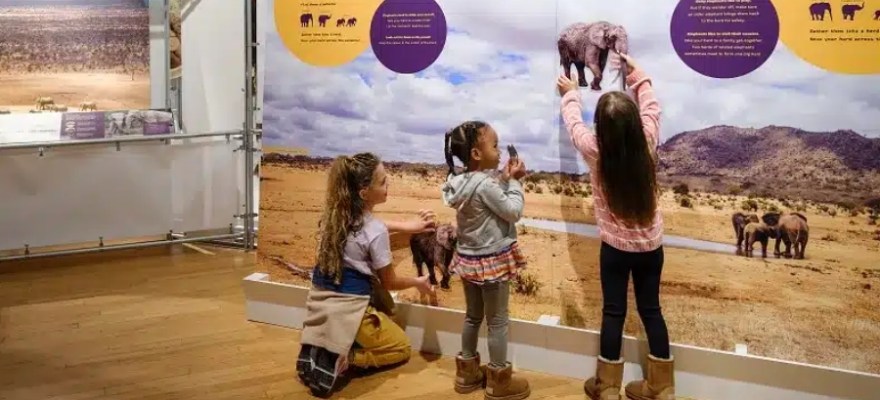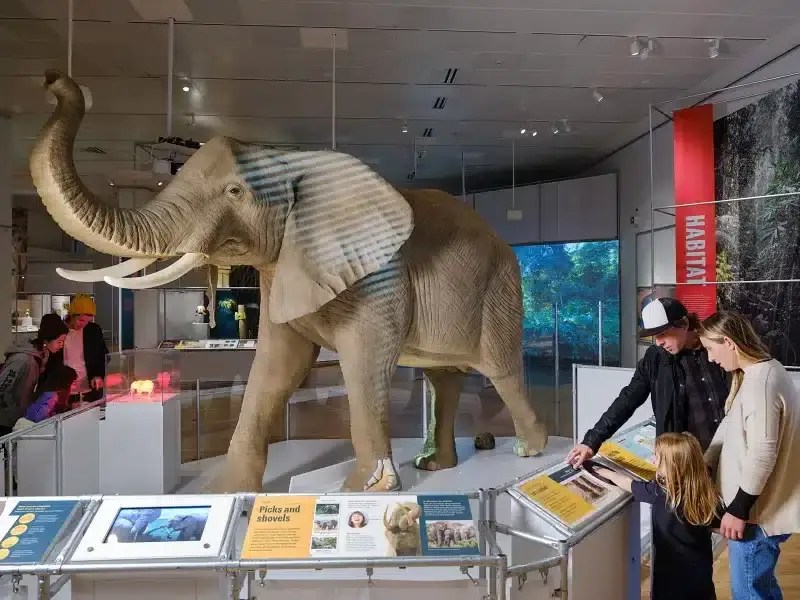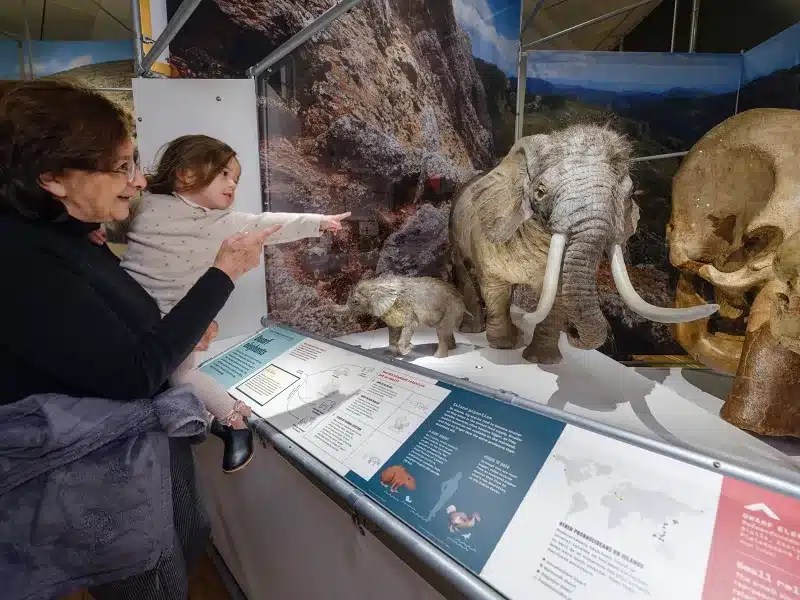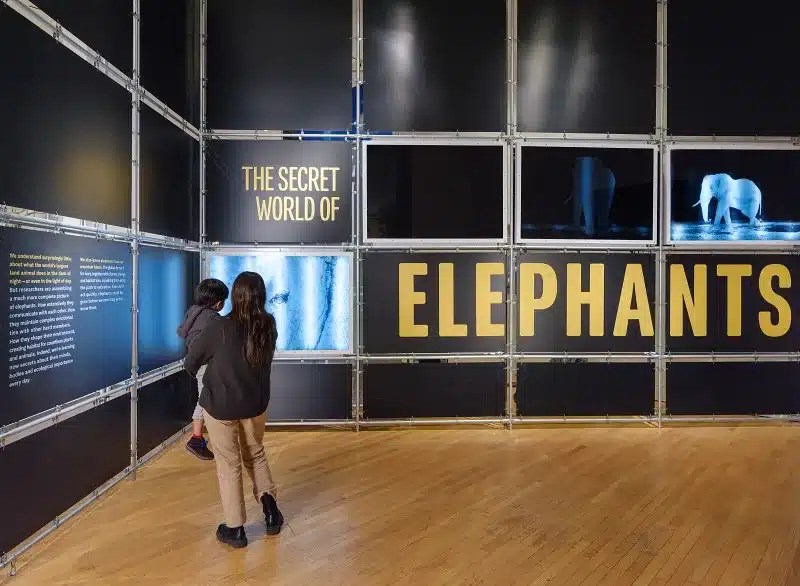
Celebration of Elephants: A Must-see New Exhibit at the American Museum of Natural History
If you haven’t yet – it is time to walk into the new The Secret World of Elephants exhibit at the American Museum of Natural History, and you’ll get a sense of just how amazing these gentle giants are in the wild.
In a narrow but sprawling curatorial space at the uptown museum, The Secret World of Elephants, now opened, tells the story of elephant species and their relatives through life-size models, videos, graphics, and more.
“We are delighted to present The Secret World of Elephants, a comprehensive look at these intriguing and important animals and the latest scientific thinking about their abilities, environmental roles, social structure, history and future,” Sean M. Decatur, president of the American Museum of Natural History, said. “This exhibition is an example of what the American Museum of Natural History does so well: by starting at a point of shared curiosity and fascination we can share larger stories about evolution, the environment, animal behavior, and the interactions between human and animals, thereby expanding understanding of the natural world and our impact on it.”

What to Expect at The Secret World of Elephants
Some of us have been fortunate enough to see an elephant at a zoo or even in the wild. However, the new museum exhibit allows visitors of all ages to learn more about these beautiful creatures.
The Secret World of Elephants offers so much insight into these animals through interactive exhibits including:
• A station where visitors can feel the extremely low sound waves elephants use—called infrasound—to send messages through the ground and to other elephants’ feet, which conduct vibrations up their legs and to their brains
• A life-size African elephant model with a video projection on one side of its body showing the skeleton of this massive mammal and providing an inside look at how it processes the huge amount of food it eats—about 300–500 pounds per day—and elephant gestation, which can last for nearly two years, longer than any other living mammal
• A miniature elephant model that prompts visitors to turn a wheel to flap its ears, a process that helps elephants keep cool in hot environments
• And—brace yourself!—an exploration of elephant poop, featuring replica dung, that provides key nutrients for plants and other animals and helps expand plant ranges by transporting seeds. (Pretty fascinating!)
Additionally, life-size models, including a scientifically accurate representation of a woolly mammoth shedding its fur, fossils and casts, and videos reveal the amazing story of these massive mammals.

All About Elephants
It’s hard to find anyone who doesn’t see how majestic elephants truly are. By the way, there are three species of elephants native to two continents: the African savanna, African forest and Asian elephant. But at one time, animals like this, who had tusks and trunks, lived on almost every continent and many islands.
Although only these three elephant species remain, their abilities remain remarkable. Elephants’ trunks are strong enough to pull down a tree, yet nimble enough to pluck a single blade of grass. They communicate extensively with each other, maintaining complex emotional ties with other herd members. They shape their environment, creating habitat for countless plants and animals. And over centuries of interactions with humans, they’ve been trained for war and work, and are powerful religious and political symbols across cultures.
“Elephants are the world’s largest land animal, but we understand surprisingly little about them,” The Secret World of Elephants curator Ross MacPhee, curator emeritus in the museum’s department of mammalogy, said. “Researchers are working toward assembling a much more complete picture of elephants and we’re learning new secrets about their minds, bodies, and ecological importance every day. We also know elephants face an uncertain future. The global demand for ivory, along with climate change and habitat loss, are pushing them along the path to extinction. If we don’t act quickly, elephants could be gone before we ever truly get to know them.”

What You Need to Know About Visiting the American Museum of Natural History (AMNH)
The American Museum of Natural History is located at 200 Central Park West, Manhattan.
Hours: The museum is open daily, 10 am–5:30 pm. The exhibit has tickets available through June 30, but it may run longer. Keep an eye on the website for added dates.
Tickets: Tickets that include admission to The Secret World of Elephants start at $28 for adults, $16.50 for children (ages 3-12) and $22.50 for seniors and students. Timed-entry tickets must be reserved in advance at amnh.org/tickets.
For more information, visit amnh.org.
Pssst….Check out The Gilder Center at the American Museum of Natural History: A Parents Guide to exploring this Now Open Center






